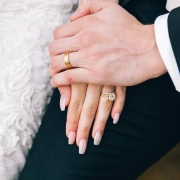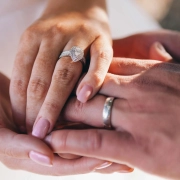Choosing The Right Diamond Shape
Choosing the perfect diamond is an exhilarating journey filled with endless possibilities and opportunities for self-expression. One of the most crucial decisions you’ll make when selecting a diamond is choosing the right shape. With a variety of diamond shapes to choose from, each with its own unique characteristics and appeal, finding the perfect shape can feel like a daunting task. In this comprehensive guide, we’ll delve into the fascinating world of diamond shapes, exploring the different options available and providing insights to help you make an informed decision that reflects your style, personality, and preferences.
Expert Advice on Choosing The Right Diamond Shape
- Round Brilliant: The round brilliant diamond is the most popular and iconic diamond shape, known for its exceptional sparkle, symmetry, and versatility. With 58 facets arranged in a precise geometric pattern, the round brilliant diamond maximises light performance, brilliance, and fire, making it a timeless choice for engagement rings, earrings, and pendants. The round shape complements a wide range of settings and styles, making it a classic and enduring option for those seeking a timeless and elegant look.
- Princess Cut: The princess cut diamond is a square or rectangular-shaped diamond with sharp corners and a brilliant facet pattern. Known for its modern elegance and geometric appeal, the princess cut diamond offers a contemporary alternative to the traditional round shape. With its clean lines and vibrant sparkle, the princess cut diamond is a popular choice for engagement rings and solitaire settings, adding a touch of sophistication and glamour to any jewellery piece.
- Emerald Cut: The emerald cut diamond is a rectangular or square-shaped diamond with stepped facets that create a hall-of-mirrors effect, showcasing the diamond’s clarity and elegance. Known for its understated beauty and vintage charm, the emerald cut diamond exudes timeless sophistication and refinement. With its elongated shape and open table, the emerald cut diamond is ideal for showcasing clarity and colour, making it a popular choice for engagement rings and statement pieces.
- Oval Cut: The oval cut diamond is an elongated version of the round brilliant diamond, featuring a similar faceting pattern but with a more elongated silhouette. Known for its flattering shape and graceful appeal, the oval cut diamond offers a unique blend of classic elegance and modern style. With its elongated shape and brilliant sparkle, the oval cut diamond is a versatile choice for engagement rings, earrings, and pendants, adding a touch of romance and sophistication to any jewellery ensemble.
- Marquise Cut: The marquise cut diamond is a distinctive diamond shape with pointed ends and a boat-shaped silhouette. Known for its elongated shape and dramatic flair, the marquise cut diamond exudes elegance and sophistication. With its unique silhouette and brilliant sparkle, the marquise cut diamond is a striking choice for engagement rings and statement pieces, adding a touch of glamour and allure to any jewellery collection.
Tips for Choosing The Right Diamond Shape
Choosing the right diamond shape is a deeply personal decision that reflects your individual style, personality, and preferences. Whether you’re drawn to the classic elegance of the round brilliant diamond, the modern allure of the princess cut, or the vintage charm of the emerald cut, there’s a diamond shape to suit every taste and occasion. By understanding the different diamond shapes and their distinctive features, you can make an informed decision that celebrates your unique beauty and style, ensuring that your diamond jewellery shines with unparalleled brilliance and elegance for years to come.
Visit CTJ Diamonds and Jewellery to see our jewellery in-store.
Search Diamonds online to create stunning custom Diamond Jewellery online.
Browse our social media pages – Facebook | Instagram to see more of our Diamond and Jewellery range.



